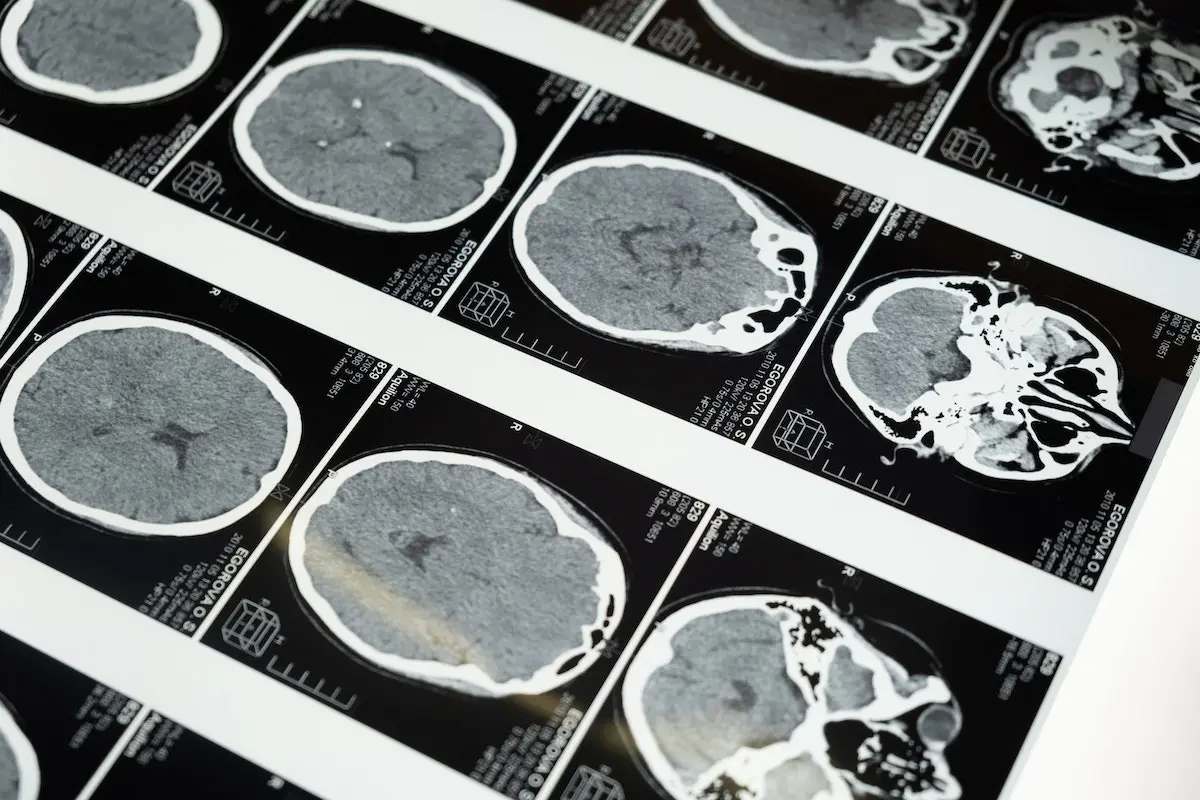September 29, 2023

Neurological disorders, ranging from mild traumatic brain injuries (mTBI) and post-traumatic stress (PTSD) to Alzheimer’s disease and Parkinson’s disease, have long posed significant challenges for patients and healthcare professionals alike. In the search for effective treatments, hyperbaric oxygen therapy (HBOT) has emerged as a beacon of hope. Research suggests that HBOT may serve as a valuable adjunctive therapy for a wide spectrum of neurological conditions.
HBOT research has yielded promising insights into its potential to enhance the management of various neurological disorders. Here’s a glimpse into the ways HBOT can make a difference:
HBOT is not a one-size-fits-all solution, and its effectiveness can vary depending on the specific neurological disorder. Here’s a brief overview of how HBOT research is making waves in the treatment of various conditions:
In the world of medical research, HBOT is emerging as a valuable ally in the battle against neurological disorders. While more studies and clinical trials are needed to fully unlock its potential, the current findings offer a glimpse into a brighter future for those affected by these conditions. The journey towards effective treatments and improved outcomes is ongoing, with HBOT at the forefront of innovation and hope.
Neubauer, R. (1998, January 1). Cerebral oxygenation and the recoverable brain. Ocean Hyperbaric Center. https://www.o2oasis.com/wp-content/uploads/2014/10/Cerebral-Oxygenation-And-The-Recoverable-Brain.pdf
Mu, J, Krafft, P. & Zhang, J. (2011, June 1). Hyperbaric oxygen therapy promotes neurogenesis: Where do we stand? ResearchGate https://www.researchgate.net/publication/51856951_Hyperbaric_oxygen_therapy_promotes_neurogenesis_Where_do_we_stand
Harch, P (2012, January 1). A Phase I Study of Low-Pressure Hyperbaric Oxygen Therapy for Blast-Induced Post-Concussion Syndrome and Post-Traumatic Stress Disorder. Journal Of Neurotrauma. https://www.o2oasis.com/wp-content/uploads/2014/11/A-Phase-I-Study-Of-Low-Pressure-Hyperbaric-Oxygen-Therapy-For-Blast-Induced-Post-Concussion-Syndrome-And-Post-Traumatic-Stress-Disorder.pdf
Harch, P. (2009, June 9). Low pressure hyperbaric oxygen therapy and SPECT brain imaging in the treatment of blast-induced chronic traumatic brain injury (post-concussion syndrome) and post traumatic stress disorder. National Library of Medicine. https://www.ncbi.nlm.nih.gov/pmc/articles/PMC2740054
Mozayeni, R. (2019, March 28). The National Brain Injury, Rescue and Rehabilitation Study – a multicenter observational study of hyperbaric oxygen for mild traumatic brain injury with post-concussive symptoms. Medical Gas Research. https://www.o2oasis.com/wp-content/uploads/2019/04/MedGasRes-TBI-3_2019.pdf
Boussi-Gross, R. (2013, November 15). Hyperbaric Oxygen Therapy Can Improve Post Concussion Syndrome Years after Mild Traumatic Brain Injury – Randomized Prospective Trial. PLOS ONE. https://journals.plos.org/plosone/article?id=10.1371/journal.pone.0079995
Rockswold, S. (2013, March 19). A prospective, randomized Phase II clinical trial to evaluate the effect of combined hyperbaric and normobaric hyperoxia on cerebral metabolism, intracranial pressure, oxygen toxicity, and clinical outcome in severe traumatic brain injury. Journal of Neurosurgery. https://www.o2oasis.com/wp-content/uploads/2014/11/A-Prospective-Randomized-Phase-II-Clinical-Trial-Outcome-In-Severe-Traumatic-Brain-Injury.pdf
Neubauer, R. (2020, January 1). Hyperbaric Oxygen Therapy Is Proving To Be Able To Take Children Significantly Beyond The Limits Of The Improvements That Were Previously Thought Possible. Alternative Medicine. https://www.o2oasis.com/wp-content/uploads/2014/11/Newhope-Hyperbaric-Oxygen-Therapy-Is-Proving-To-Be-Able-To-Take-Children-Significantly-Beyond-The-Limits-Of-The-Improvements-That-Were-Previously-Thought-Possible.pdf
Neubauer, R. (2003). High Dose Oxygen Therapy for Cerebral Palsy and the Brain Injured Child (Documentation via SPECT Imaging). Ocean Hyperbaric Neurologic Center. https://www.o2oasis.com/wp-content/uploads/2014/11/High-Dose-Oxygen-Therapy-For-Cerebral-Palsy-And-The-Brain-Injured-Child.pdf
Neubauer, R. (1999, November 10). Hyperbaric oxygenation in cerebral palsy and the brain injured child. European Pediatric Neurology Society. https://www.o2oasis.com/wp-content/uploads/2014/11/Neubauer-Hyperbaric-oxygenation-in-cerebral-palsy-and-the-brain-injured-child.pdf
Fischer, B. (1983, January 27). Hyperbaric-Oxygen Treatment of Multiple Sclerosis — A Randomized, Placebo-Controlled, Double-Blind Study. The New England Journal of Medicine. https://www.nejm.org/doi/full/10.1056/NEJM198301273080402
Gottlieb, S. (1998). Multiple Sclerosis: Its Etiology, Pathogenesis, and Therapeutics With Emphasis on the Controversial Use of HBO. Journal of Hyperbaric Medicine. https://www.o2oasis.com/wp-content/uploads/2014/11/Multiple-Sclerosis-Its-Etiology-Pathogenesis-And-Therapeutics-With-Emphasis-On-The-Controversial-Use-Of-HBO.pdf
Neubauer, R. (1998). Hyperbaric Oxygenation In The Acute Stroke. Ocean Hyperbaric Center. https://www.o2oasis.com/wp-content/uploads/2014/11/Hyperbaric-Oxygenation-In-The-Acute-Stroke.pdf
Efrati, S. (2013, January 15). Hyperbaric Oxygen Induces Late Neuroplasticity in Post Stroke Patients – Randomized, Prospective Trial. PLOS ONE. https://journals.plos.org/plosone/article?id=10.1371/journal.pone.0053716
Hyperbaric oxygen in the treatment of patients with cerebral stroke, brain trauma, and neurologic disease
Al-Waili, N. (2005, November). Hyperbaric oxygen in the treatment of patients with cerebral stroke, brain trauma, and neurologic disease. Springer. https://link.springer.com/article/10.1007/BF02849960
Walker, M. (1995). Reversal of Residual Stroke Symptoms Using Hyperbaric Oxygen Therapy. Mary Ann Liebert. https://www.o2oasis.com/wp-content/uploads/2014/11/Reversal-of-Residual-Stroke.pdf
Neubauer, R. (1992, June). Identification of Hypometabolic Areas in the Brain Using Brain Imaging and Hyperbaric Oxygen. Lippincott. https://journals.lww.com/nuclearmed/abstract/1992/06000/identification_of_hypometabolic_areas_in_the_brain.10.aspx
Wilson, J. (2003, June 4). Hyperbaric Oxygen in the Treatment of Migraine With Aura. The Journal of Headache and Pain. https://headachejournal.onlinelibrary.wiley.com/doi/full/10.1046/j.1526-4610.1998.3802112.x
Silberstein, S. (2000, September 26). Practice parameter: Evidence-based guidelines for migraine headache (an evidence-based review). American Academy of Neurology. https://n.neurology.org/content/55/6/754.short
Figueroa, X. (2016). Hyperbaric Oxygen Therapy and Alzheimer’s Disease. Hyperbaric Research & Studies. https://www.o2oasis.com/wp-content/uploads/2016/07/Hyperbaric-Oxygen-Therapy-and-Alzheimers-Disease.pdf
Harch, P. (2019, January 24). Hyperbaric oxygen therapy for Alzheimer’s dementia with positron emission tomography imaging: a case report. Medical Gas Research. https://gallery.mailchimp.com/023bcc4ecbbef9cc89b66d417/files/bfadbafa-3bf2-45eb-a1a2-71290acb167a/MedGasRes84181_4626428_125104.pdf
Hoggard M. (2002) Hyperbaric Oxygen Treatment On A Parkinson’s Disease Patient: A Case Study. Proceedings of the 14th International Congress of Hyperbaric Medicine. https://www.o2oasis.com/wp-content/uploads/2017/08/HYPERBARIC-OXYGEN-TREATMENT-ON-A-PARKINSONS-PATIENT-A-CASE-STUDY.pdf
Whitaker, J. (2014, September 24). One-Two Punch: Glutathione and HBOT. Hyperbaric Research & Studies. https://www.o2oasis.com/wp-content/uploads/2018/09/One-Two-Punch-Glutathione-and-HBOT.pdf
Harch, P. (2017, July 3 ). Subacute normobaric oxygen and hyperbaric oxygen therapy in drowning, reversal of brain volume loss: a case report. Medical Gas Research. https://www.o2oasis.com/wp-content/uploads/2017/07/Near-Drowning-Abstract.pdf
Share on:
A free, open discussion group to explore hyperbaric oxygen therapy, compare home chamber brands, access expert info, and get exclusive member discounts.